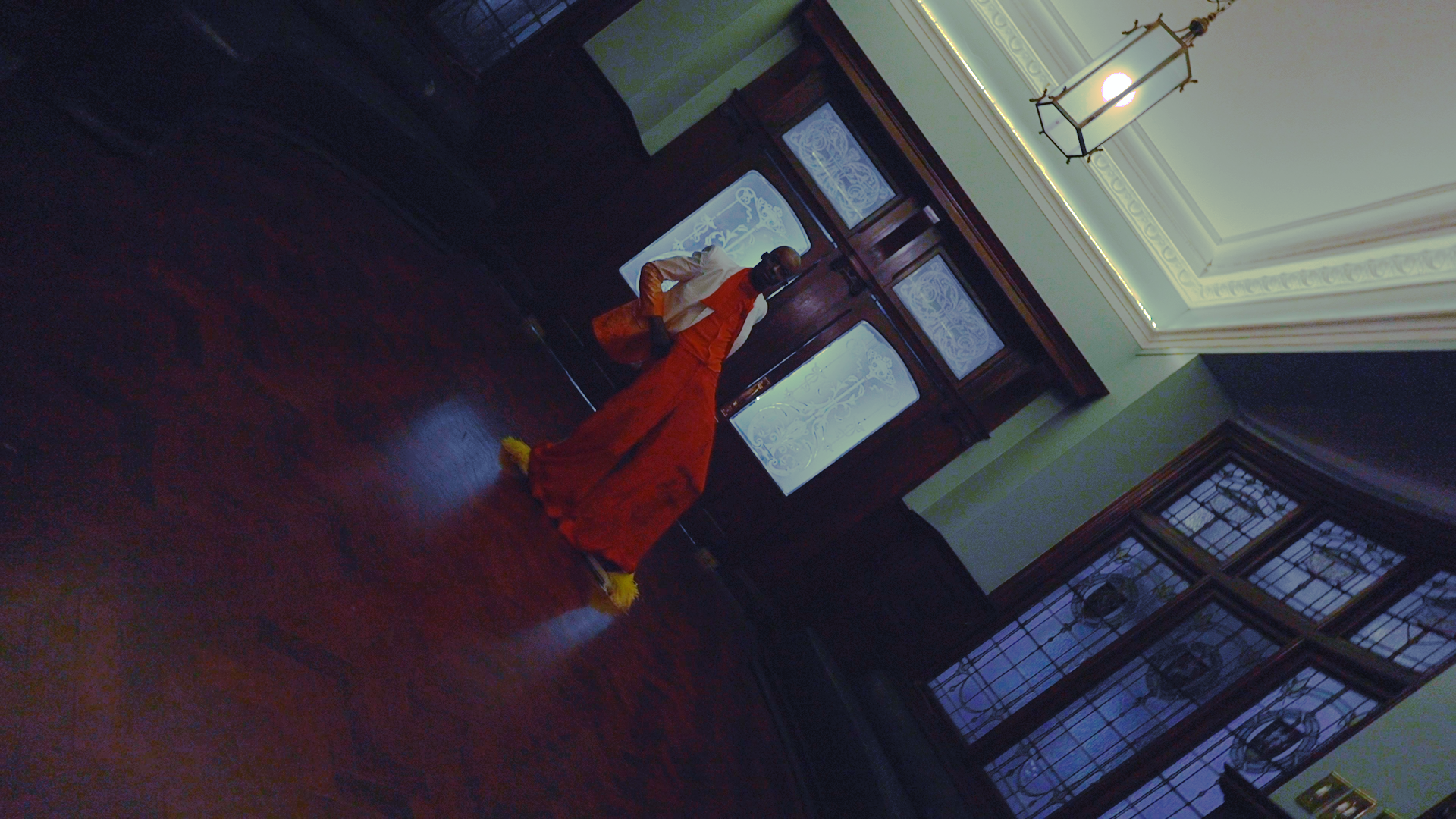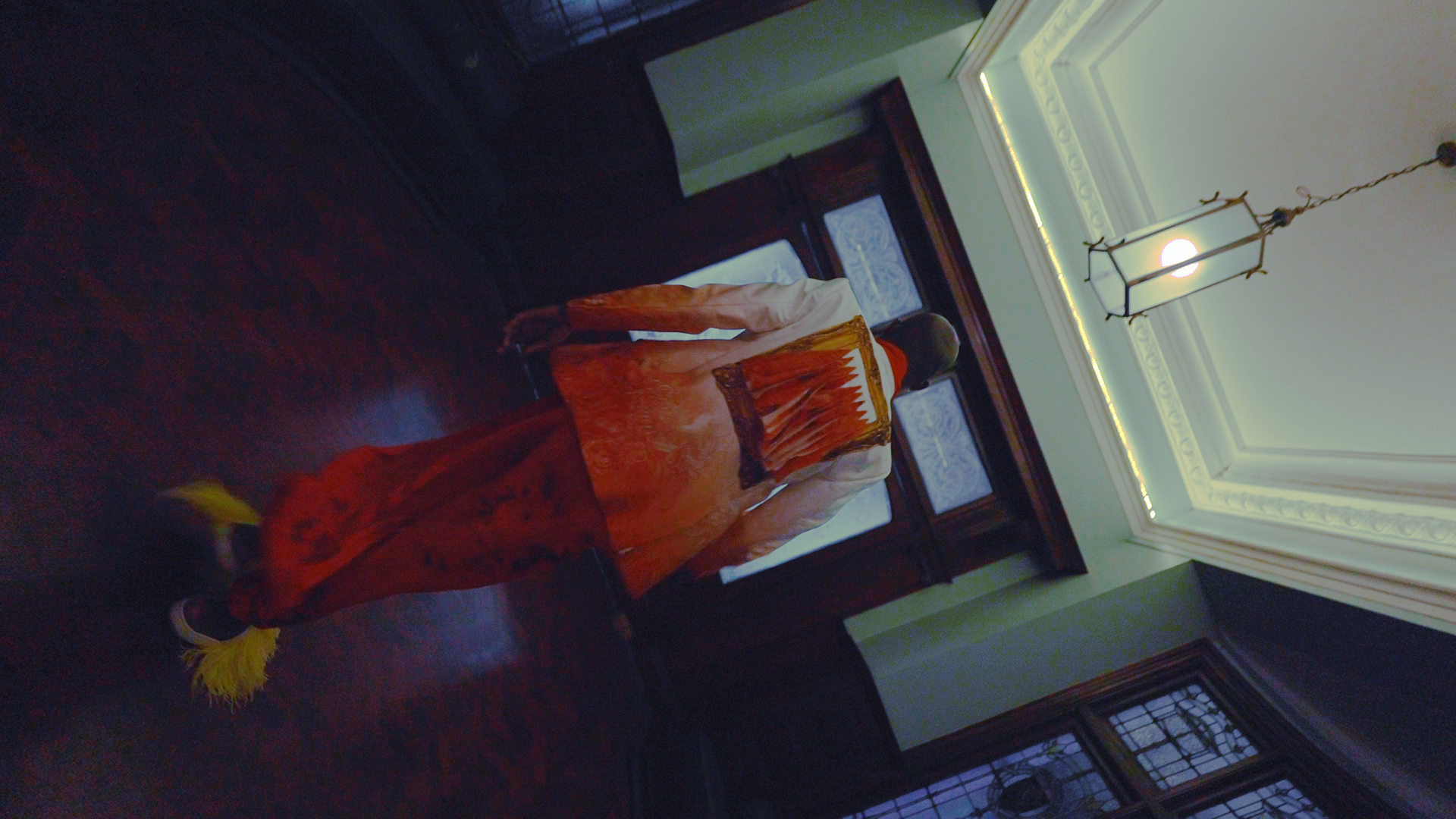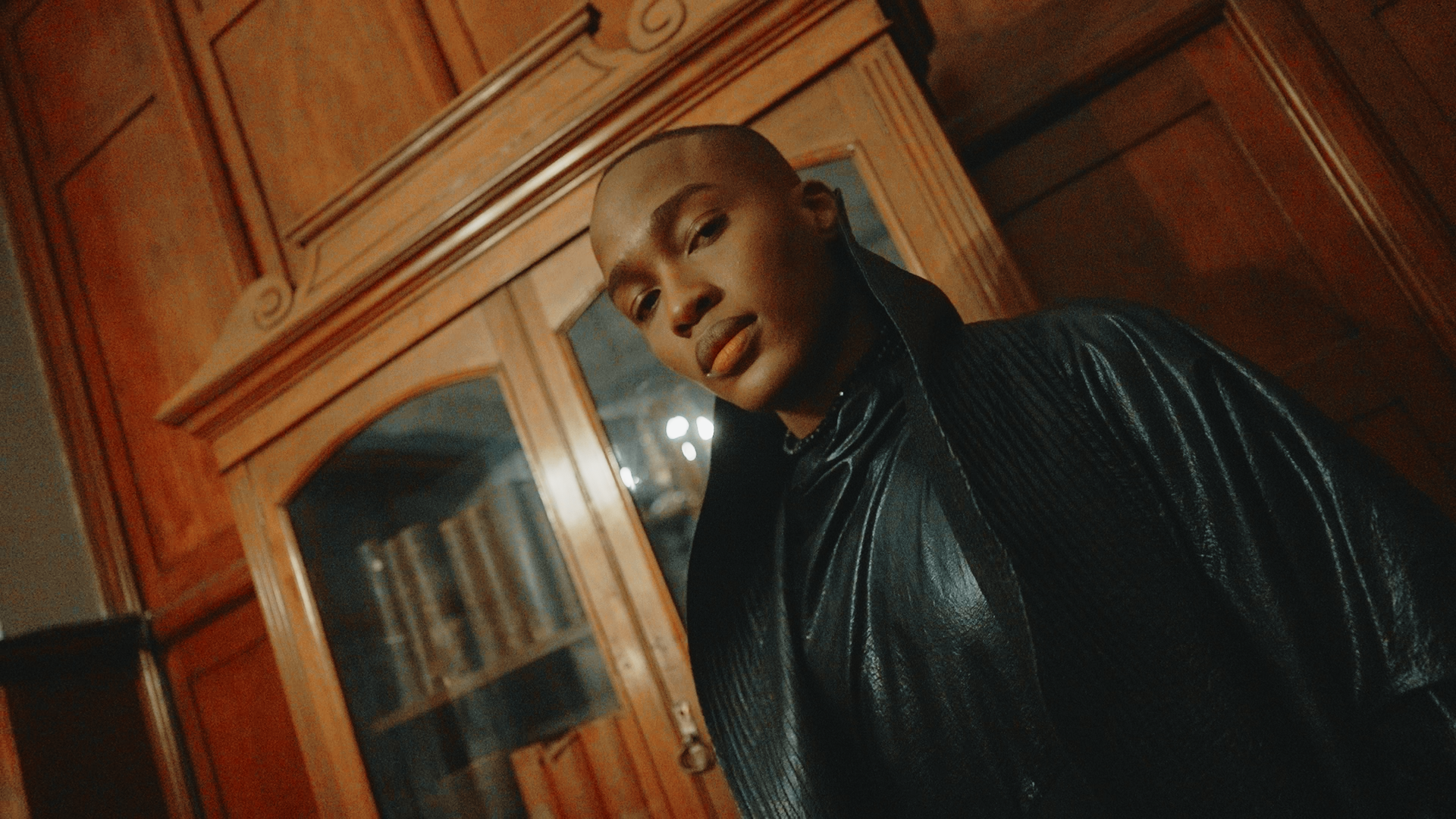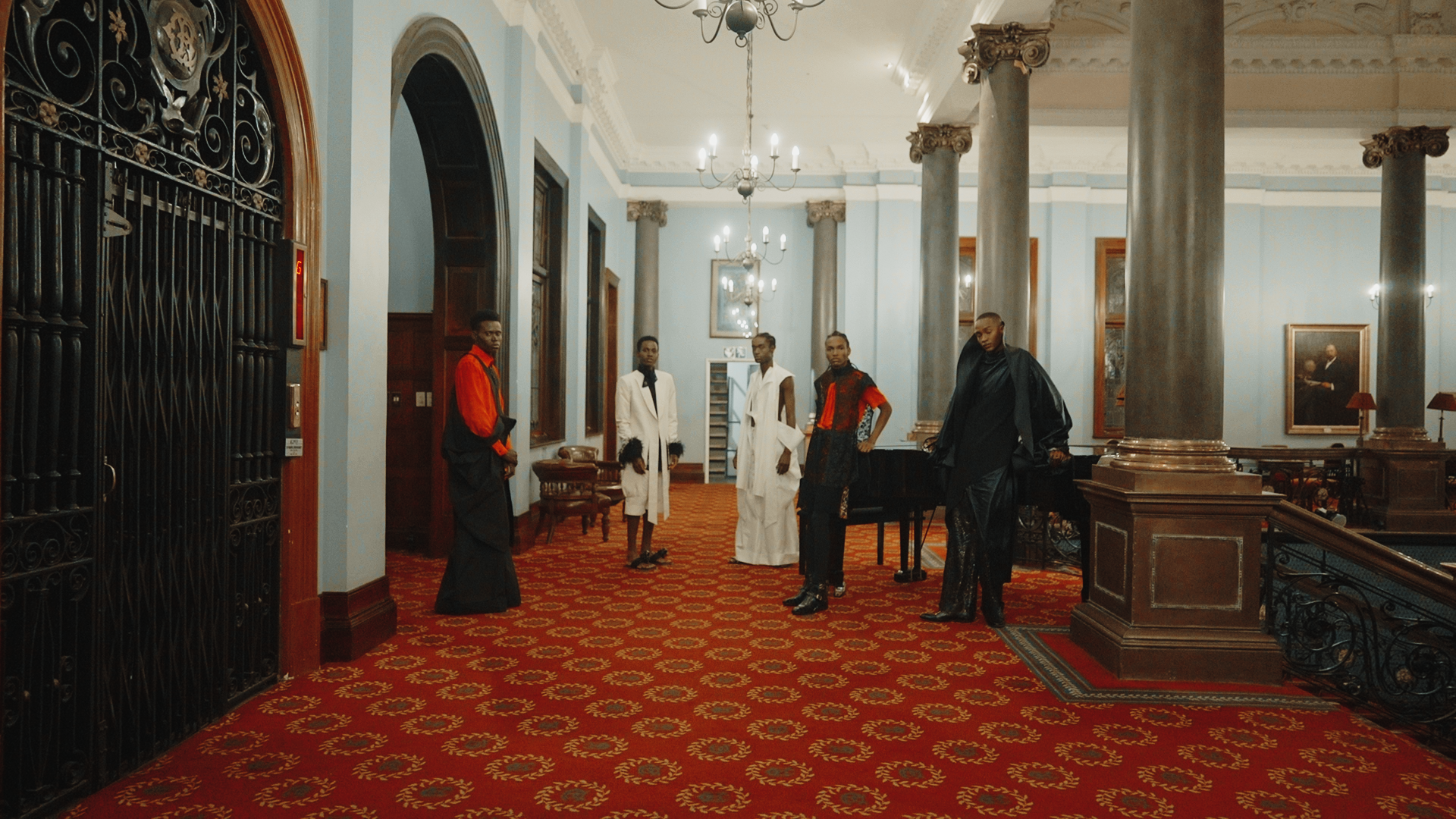There is nothing that captures fashion as well as a film. Films like The Devil Wears Prada, Cruella, and Phantom Thread, are all examples of when fashion becomes a character within a film. To see a garment come alive under the perfect lighting, worn by a picturesque model with the right music playing in the background, can transform the audience’s world and make anyone watching wish to be absorbed into the film and don the garments.
Exceeding an audience’s expectations of what defines a fashion film motivated Cinematographer Hlogi Masipa and Director Daliwonga Sakman to break the norm when producing David Tlale’s fashion film. With no clear narrative tale in the film, Hlogi and Daliwonga tell a story through the movement of the cameras, the music, and the severe looks of the models. Captured through Dutch angles and low lighting comes the captivating fashion film from cinematographer Hlogi Masipa and director Daliwonga Sakman. The film, an official Fashion Film Festival Milano selection, showcases David Tlale’s bold designs and is a true ode to creative storytelling and original filmmaking.
In true guerilla-style filmmaking, Hlogi and Sakman went into the shoot with a camera, one 24mm lens, and a vision. Inspired by the unusual designs of David Tlale, Hlogi decided to colour outside the lines and, instead of following the rules of filmmaking, went into the shoot without a storyboard, lights, or a crew. Even without a host of lighting equipment, Hlogi has managed to use natural lighting to spotlight the beauty of the garments, the severity of the model’s faces, and the classic architecture of The Rand Club setting.

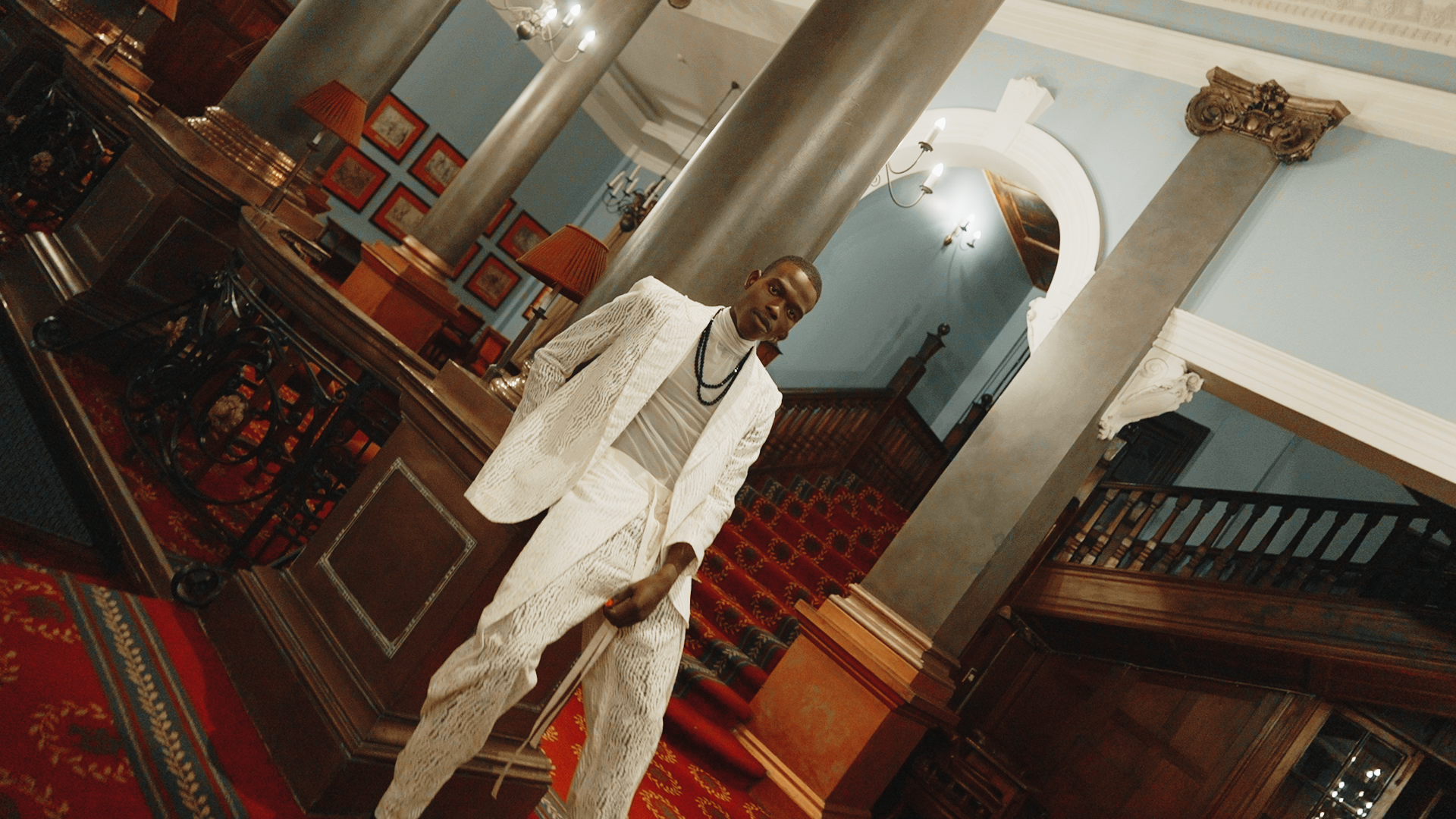
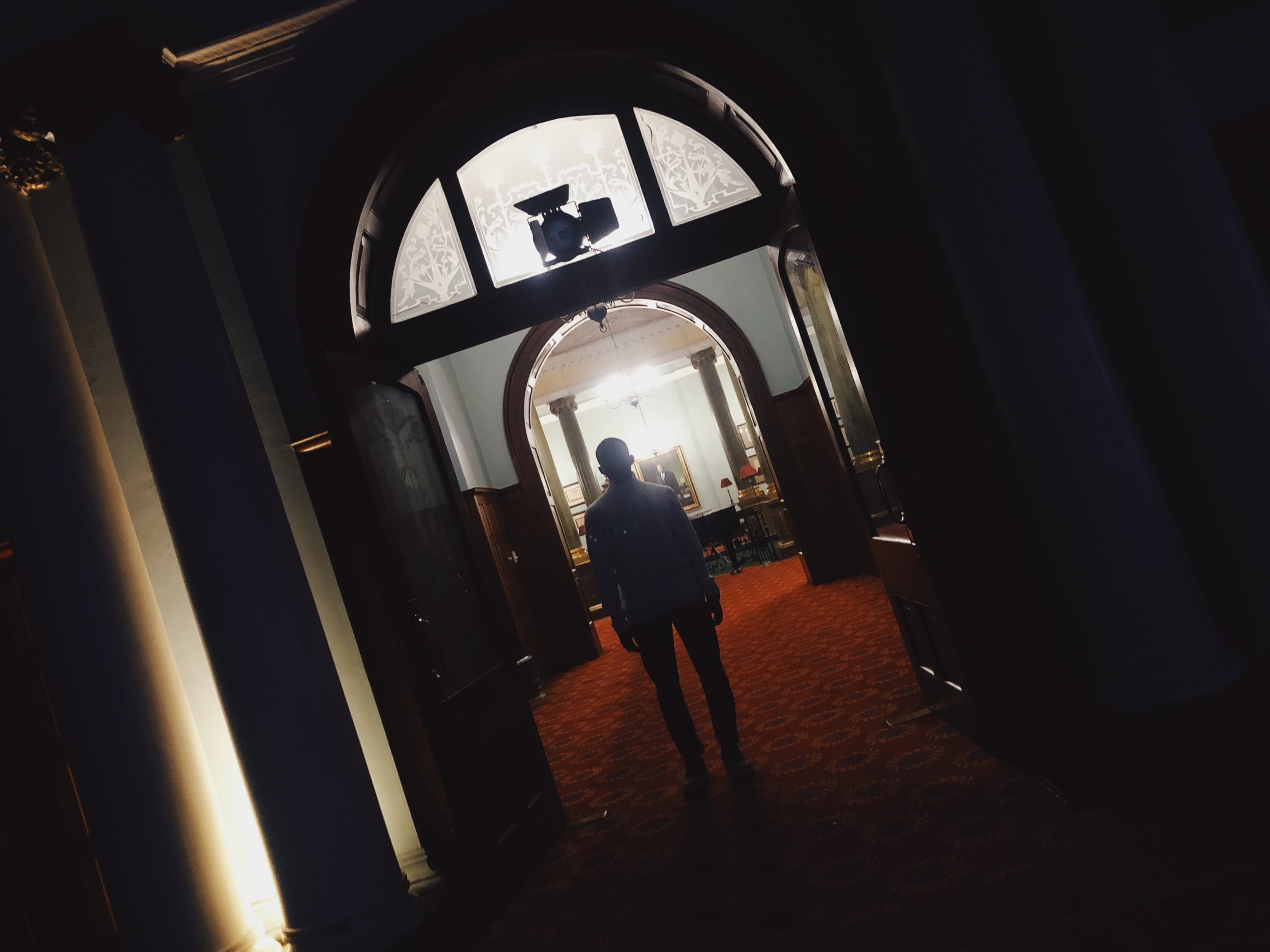
In the first frame, as David Tlale’s name fades away, the viewer’s eye is immediately drawn into the frame because of the eye-catching marriage of colour and music symphony created by the background, the garments and the models. The models look towards the camera – daring the viewer to enter their world and be able to wear the garments they are sporting as the camera manages to capture the models in a larger-than-life way while still showcasing the beauty of The Rand Club.
Inspired by South African Director of Photography Jason Present, who often uses movement in his frame, Hlogi decided to incorporate movement and Dutch angles to mirror the emotions that the Tlale’s avant-garde garments create. Although the famous South African designer makes these designs for men, the garments toe the line of gender and come off as feminine, a fact that appealed to both Hlogi and Daliwonga. Taking their cue from the shapes, lines, and colours of the collection, the creative duo create a film that pushes boundaries, ensuring that the viewer is engrossed from frame to frame as the models look into the camera and come off as both unfriendly and alluring.
Like a rollercoaster, or a crescendo, the further the film goes on, the louder and more chaotic it grows. Through editing and camera movements, Hlogi and Daliwonga ease us into the world of this film. One is slowly introduced to the garments and the models, who have a “who dares to enter our house” look on their faces. As the film progresses, there is a series of camera flashes, increasingly changing camera angles, and movement from the models become more rapid, and the viewer grows unsettled. “Fashion is out there and different, and so are Tlale’s designs. I wanted the audience to be unsettled. Fashion is different and does not conform to norms. I wanted the viewer to feel that through the film.”

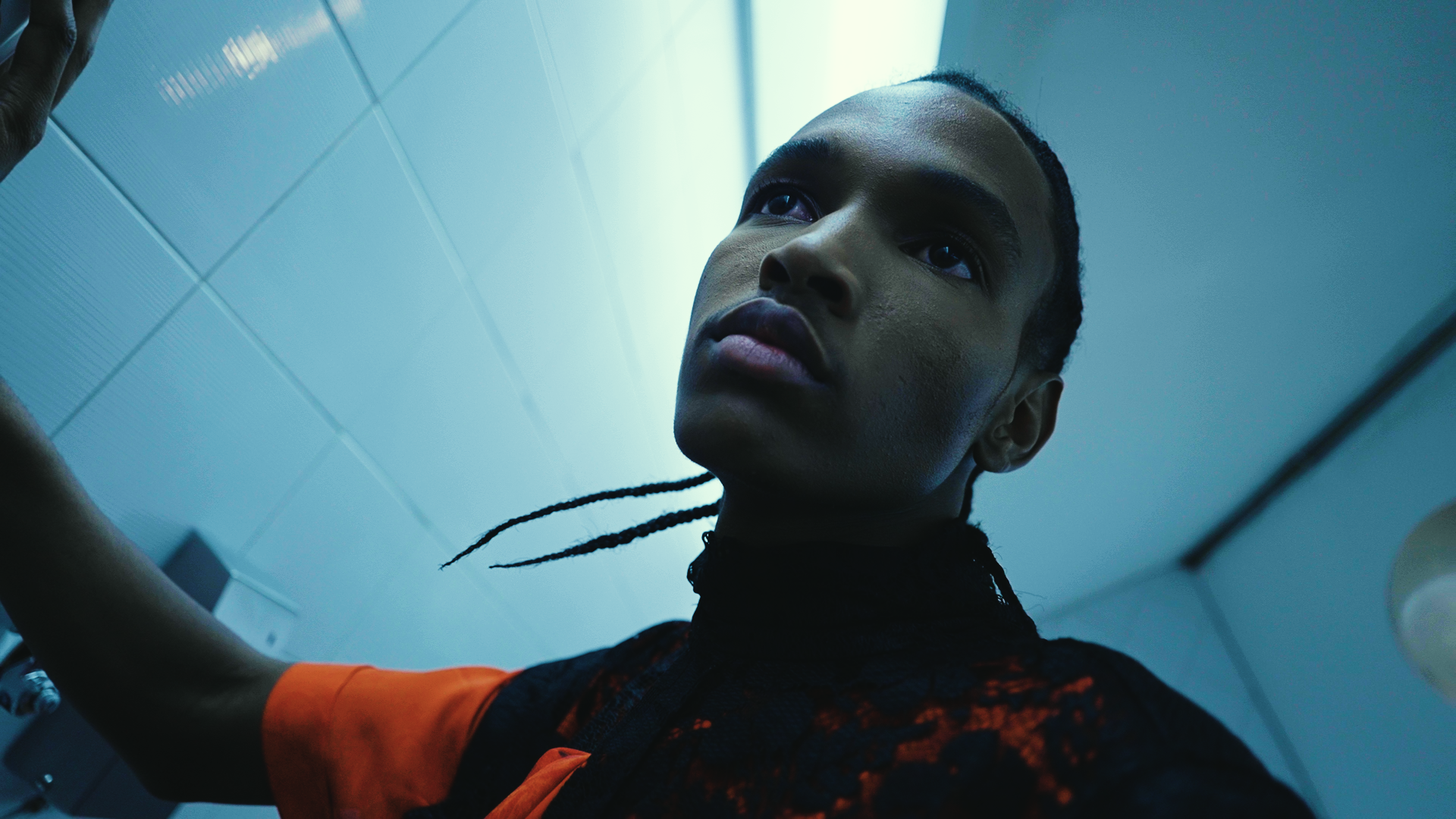
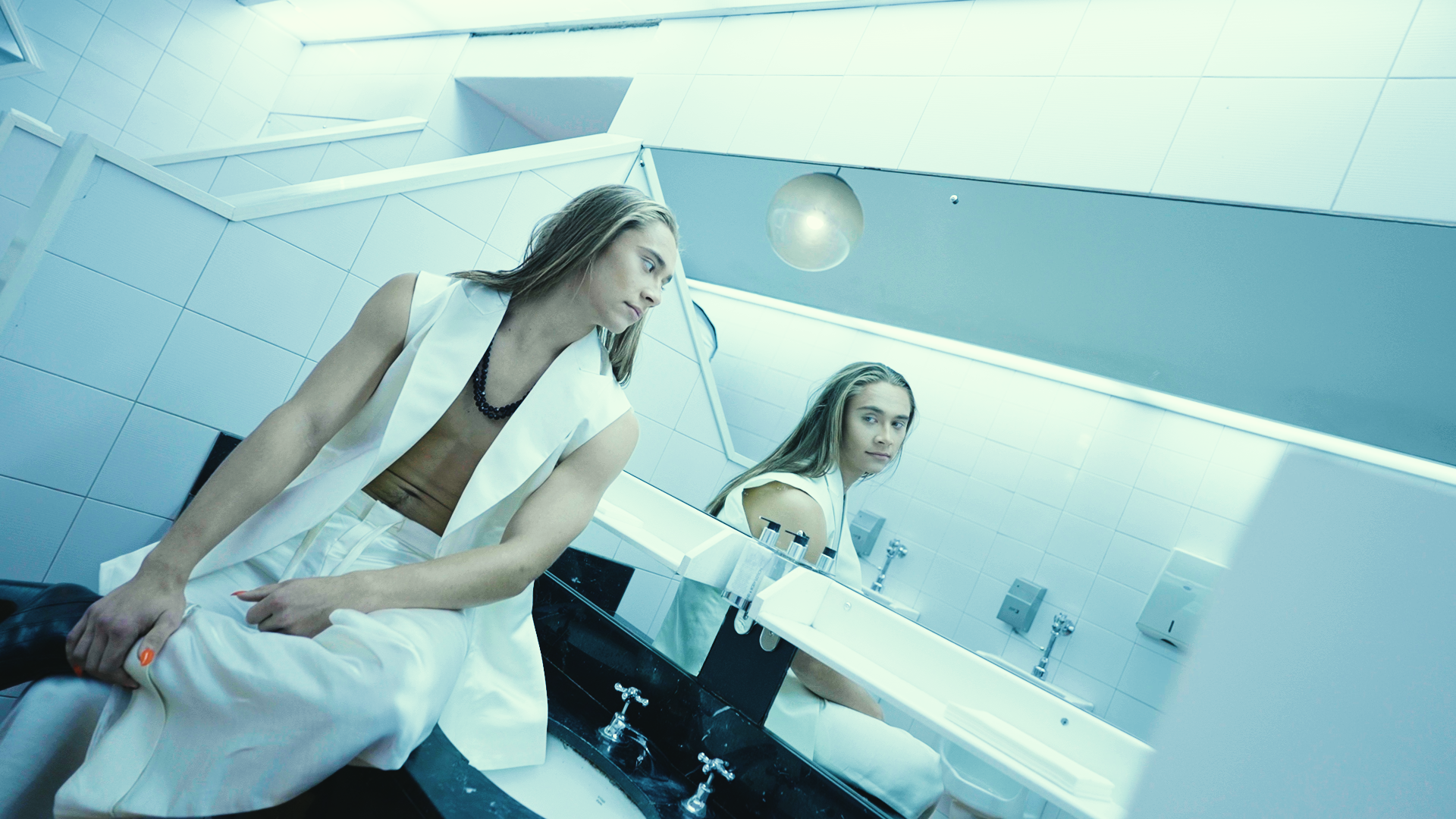
The music becomes eerily uncomfortable, and the viewer becomes completely engulfed in the world of these garments and the men who wear them. Hlogi has choreographed a dance like no other between the models, the garments, and the cinematography in this compelling and unforgettable fashion film, where every frame is a picture.
Not only did the creative duo want the fashion film to be an audio-visual experience, but they also wanted to include a physical element to it. “Part of being a filmmaker is understanding your audience, and I understand that a lot of people will be watching this film on their phones. So the decision to include so many Dutch angles was intentional so people would turn their screens this way and that, and be totally engrossed in the entire experience.”
Understanding that his audience was going to view the film from a mobile phone also motivated Hlogi’s filmmaking style. Part of the filmmaking choices was seeing the film through the viewer’s eye and wanting to create an all-encompassing experience for the viewer. As the eerie- dreamlike music comes on and the camera begins to turn into a Dutch angle, one is compelled to turn the screen without realizing it. “I wanted people to feel like they were put onto a rollercoaster. I wanted them to watch the film and have an emotional experience.”
On whether he will create more fashion films, Hlogi hopes to explore the medium more and make a fashion film annually. “To make it into the Milano Film Festival, amongst the type of big names, without a budget, or equipment, or a crew, is truly astounding.” This fashion film is truly a celebration of filmmaking and fashion, the vibrant colours of the garment and the piercing looks of the models will live on in your head almost as long as the masterful direction and cinematography will.
